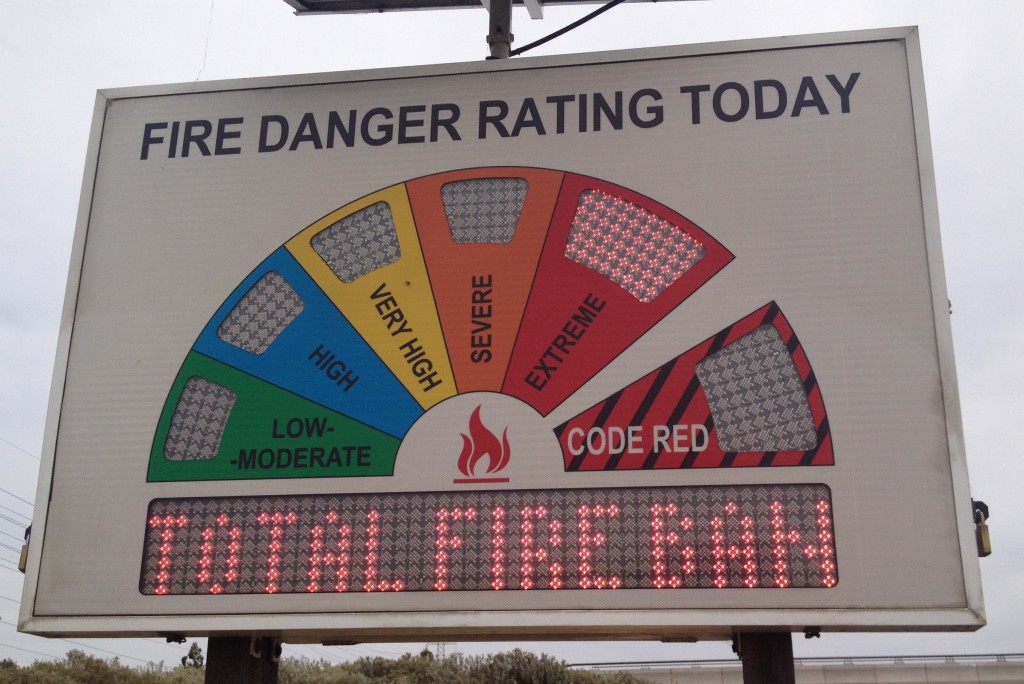
This summer has already seen its fair share of fires in Victoria, South Australia, New South Wales and Western Australia, together with the inevitable debate on whether this is climate change in action. Indeed, it seems these types of events are likely to become more frequent, as the Climate Council has spelt out in its recent series of reports covering the bushfire risks for Victoria, NSW, ACT and South Australia.
Yes, fire seasons are becoming longer and extreme fire weather is becoming more common, but that’s not the whole story. From much of the public commentary, one would think that there’re any number of simple solutions to deal with this hazard. The management of natural hazards, including bushfire, is a highly complex issue involving all layers of government, the private sector, and the community itself.
Hazards, such as bushfire, exist because they are a natural part of the environment and the phenomenon harms something we value: our lives, houses, livelihood, or amenities. There has been a long historical transfer of responsibility for the protection against such hazards to the government and its agencies on the premise that it’s better to have properly-trained and resourced organisations to respond and protect us. However, as pointed out by the Victorian 2009 Bushfires Royal Commission, that transfer of responsibility has probably gone too far. Individuals are no longer taking sufficient responsibility for their own risk management. It’s analogous to the community not installing locks on houses because we have a police force to address the risk of burglary.
Governments over many years have allowed this risk transfer to continue through perverse incentives that favour people not taking responsibility. In fact, the World Bank noted in a recent World Development Report that’s not just a local problem. One of the main reasons why ‘DRR [Disaster Risk Reduction] savings are not always enacted is because political capital is rarely gained from cost-effective DRR measures’. In fact, Healy and Malhotra assert that voters reward politicians for delivering disaster relief funding—but not for investing in disaster preparedness. That presents a fundamental challenge to the implementation of the recent Productivity Commission’s inquiry into disaster funding arrangements, which in its draft report advocated a substantial shift of focus from funding relief and recovery to funding mitigation.
Why’s this a problem? Because the costs to the economy are escalating rapidly and unsustainably. As noted in a recent study by Deloitte Access Economics, commissioned by the Business Roundtable for Disaster Resilience and Safer Communities, the cost to the economy is currently around $6 billion a year and predicted to double by 2030. That’s mainly a reflection of the increasing value of assets, and of an expanding population at risk. The study didn’t factor in any consideration of the impacts of climate change of the frequency or severity of events.
So where does the solution lie? It’s clear from our research, conducted after major fire events, that while the population recognises it’s living in a risky environment, many people do not perceive that as a risk to them personally. Warnings about leaving early are mostly unheeded. In fact, recent research shows that few people left the day before a fire that impacted their property based on fire weather warnings alone. This presents a challenge for authorities, as it results in a large percentage of people waiting to see what will happen, and in many cases sees them leave at the last minute. How many times have we seen news reports about residents ‘taken totally by surprise’, saying, ‘we just managed to get out in time by driving through the flames’?
So why is that the case? There are many answers. Governments are exasperated about why those people don’t understand the risk. I would suggest that maybe they do understand risk—but only part of it. After all, risk is composed of two factors: one related to likelihood and the other to consequence. It’s possible that although people recognise the ultimate consequence of a risk, they discount its likelihood. After all, the general perception is that the chance of any individual being impacted by a fire that will seriously affect them during the time they live in a house is small. That—incorrect—thinking is a major challenge for the agencies: a 1:50-year likelihood means, in general, a 2% chance every year. There’re also few incentives or penalties for communities to comply in the short term, few discounts on insurance, and little enforcement.
So what to do? Firstly, the discussion started by the Productivity Commission process should continue through the Australian and New Zealand Emergency Management Committee about how to engage all parties, public and private, to work towards mitigation of hazards. Secondly, control inappropriate land-use planning; ensure that every opportunity is taken to rebuild in ways that mitigate future hazards. And finally, remove politics from the decision-making process. A pipe dream, I know, but worth a try.
Dr Richard Thornton is Chief Executive Officer of the Bushfire and Natural Hazards CRC. Image (c) 2015, courtesy of Bushfire and Natural Hazards CRC.

